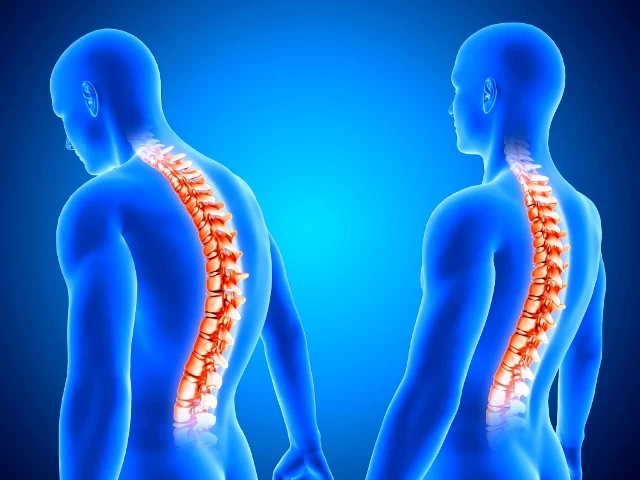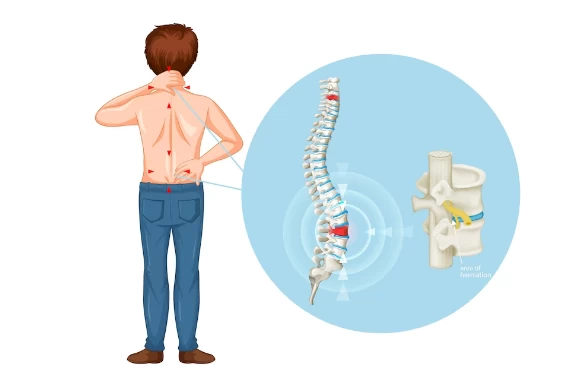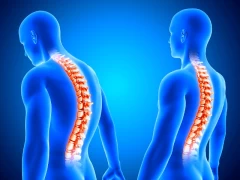
Skoliosis is Not a Disease
- Skoliosis is Not a Disease
- What is Scoliosis? How is it Treated?
- What Can Scoliosis Symptoms Include?
- What are the Treatment Methods for Scoliosis?
- Achieving Correction Through Respiration in Scoliosis
- The Most Important Aspects of Rehabilitation for Scoliosis are Discipline and Patience
- A Warning to Parents: Monitor Your Children!
What is Scoliosis? How is it Treated?
Scoliosis is a condition characterized by the lateral curvature of the spine during the growth period just before adolescence. Although the exact cause of scoliosis is often unknown, it is known to affect about 3% of adolescents today.
While most scoliosis cases have a mild course, some spinal deformities can become more severe as children grow. Severe scoliosis can have an obstructive effect on the body. Especially, significant spinal curvature can reduce the space in the chest cavity, making it difficult for the lungs to function properly.
When you notice scoliosis symptoms in your child, do not hesitate to consult a doctor. However, mild curvatures may not be easily noticed by parents or children since they develop gradually and usually do not cause pain. Sometimes, teachers, friends, or sports teammates can be the first to notice a child's scoliosis.
What Can Scoliosis Symptoms Include?
Scoliosis symptoms may include:
- Uneven shoulders
- One shoulder blade being more prominent than the other
- Uneven waistline
- One hip being higher than the other
There are generally no major differences in the treatments applied to adults and young individuals. We attach great importance to diagnosing scoliosis in adolescents. We strive to make the diagnosis as early as possible in terms of age and curvature.
In our scoliosis treatment, we apply 3-dimensional exercises for low angles. For moderate angles, we combine exercise and brace treatments. For advanced high angles, we recommend surgical intervention.
Since scoliosis is a progressive condition, we aim to slow down its progression through conservative treatments. If possible, we try to maintain control over the angle and reduce it.

What are the Treatment Methods for Scoliosis?
The most effective method in scoliosis treatment is the Schroth Method.
This special method can only be applied by physiotherapists who have completed specific SCHROTH training at the postgraduate level. In cases of scoliosis in adults, problems such as pain, movement restrictions, or balance issues may arise. In addition to various manual therapy methods, we also apply specific 3-dimensional scoliosis exercises to reduce the patient's pain and improve their quality of life.
Achieving Correction Through Respiration in Scoliosis
When scoliosis occurs, individuals may become less aware of their bodies. We apply 3-dimensional corrective exercises and rotational exercises found in the Schroth method to patients. Through these exercises, we can achieve correction using respiration. Similarly, we provide exercise training to strengthen core muscles.
In post-surgery cases, we support the surgeon's work by applying exercises that achieve the desired corrections and spine flexibility in patients. We can also help patients gain awareness of correct posture. Cooperation between the surgeon and physiotherapist is crucial in this process.
The Most Important Aspects of Rehabilitation for Scoliosis are Discipline and Patience
Rehabilitation treatments require patience and discipline. With regular sessions, success can generally be achieved within 6 to 12 months. The most important thing is to explain to children what they need to do. Children visit us once or twice a week. For more advanced cases, we may call them for treatment more frequently. On average, we teach children the exercises in about 15 sessions. Afterward, they can continue the treatment through periodic check-ups. We achieve success with disciplined children; they become happy when they see their progress in photos and say, ‘I have improved.’
A Warning to Parents: Monitor Your Children!
Pay special attention to your daughters before and during the menstrual period. Watch out for signs like asymmetry, uneven shoulders, uneven shoulder blades, or uneven waistlines. Since children grow rapidly, scoliosis can progress significantly within three months, leading to an increase of up to 20 degrees.
Moreover, it is essential to have a competent team for treatment. Treating scoliosis is a collaborative effort involving spine surgeons, physiotherapists, orthotic and prosthetic technicians, parents, and children working in harmony.


